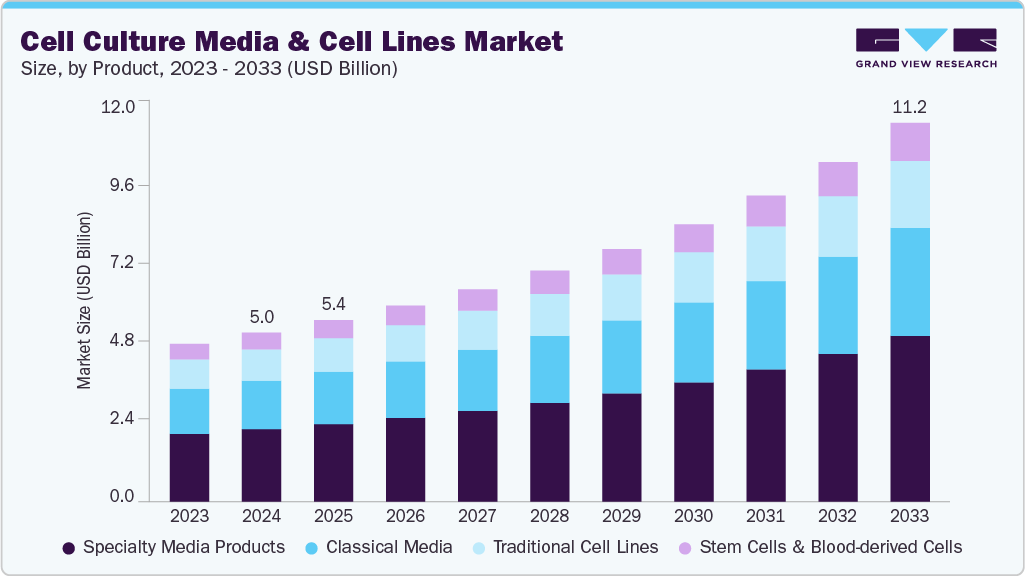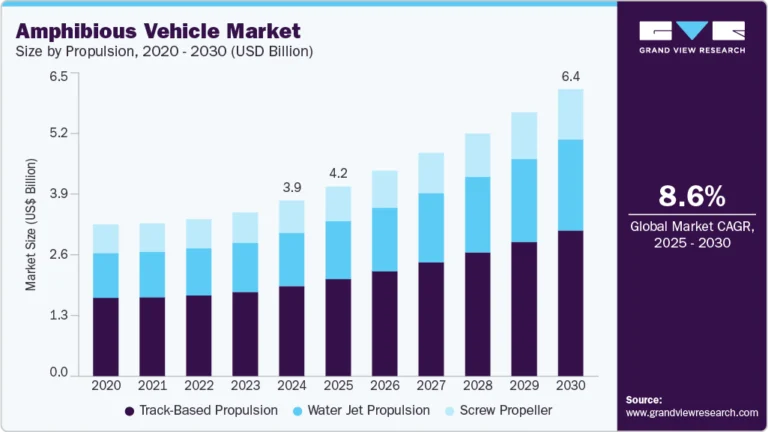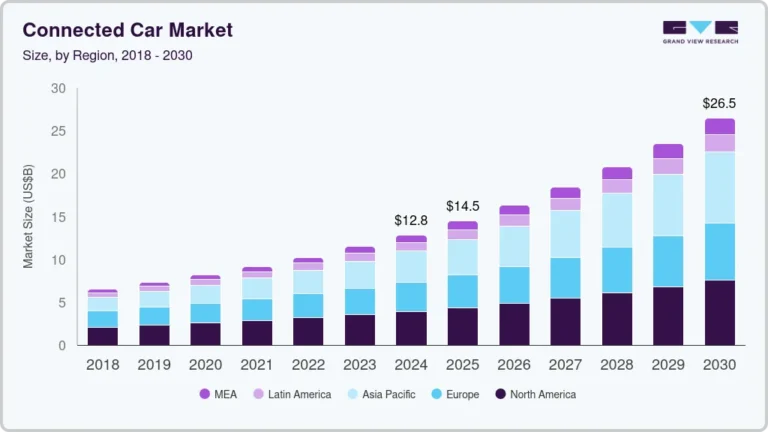Cell Culture Media & Cell Lines Market Size, Share & Trends Analysis growing at a CAGR of 9.63% from 2025 to 2033

The global cell culture media & cell lines market size was estimated at USD 5.02 billion in 2024, and is projected to reach USD 11.25 billion by 2033, growing at a CAGR of 9.63% from 2025 to 2033. This growth is driven by the rising demand for biopharmaceuticals, increasing investments in regenerative medicine and cancer research, and advancements in cell-based technologies.
Key Market Trends & Insights
- The North America cell culture media & cell lines market held the largest share of 43.06% of the global market in 2024.
- The cell culture media & cell lines industry in the U.S. is expected to grow significantly over the forecast period.
- By product, the specialty media products cells segment held the largest market share of 42.86% in 2024.
- Based on application, the biopharmaceutical production segment held the largest market share in 2024.
- By end use, the large biopharmaceutical companies segment held the highest market share in 2024.
Market Size & Forecast
- 2024 Market Size: USD 5.02 Billion
- 2033 Projected Market Size: USD 11.25 Billion
- CAGR (2025-2033): 9.63%
- North America: Largest market in 2024
- Asia Pacific: Fastest growing market
Request a free sample copy or view report summary: https://www.grandviewresearch.com/industry-analysis/cell-culture-media-cell-lines-market-report/request/rs1
Moreover, the expanding applications of cell culture in drug discovery, vaccine production, and personalized medicine are expected to boost market growth.
Rising Vaccine Demand and Scaling of Production Capacities
The increasing global demand for vaccines, especially highlighted by the COVID-19 pandemic, has become a key driver for the cell culture media and cell lines industry. Vaccines require efficient and scalable production platforms, where cell culture plays a vital role in propagating viruses and producing vaccine antigens. High-quality cell culture media and stable, well-characterized cell lines ensure consistent, safe, and effective vaccine manufacturing. As the world continues to focus on controlling infectious diseases such as influenza, RSV, and emerging viral threats, the demand for robust cell culture systems is expected to grow significantly.






